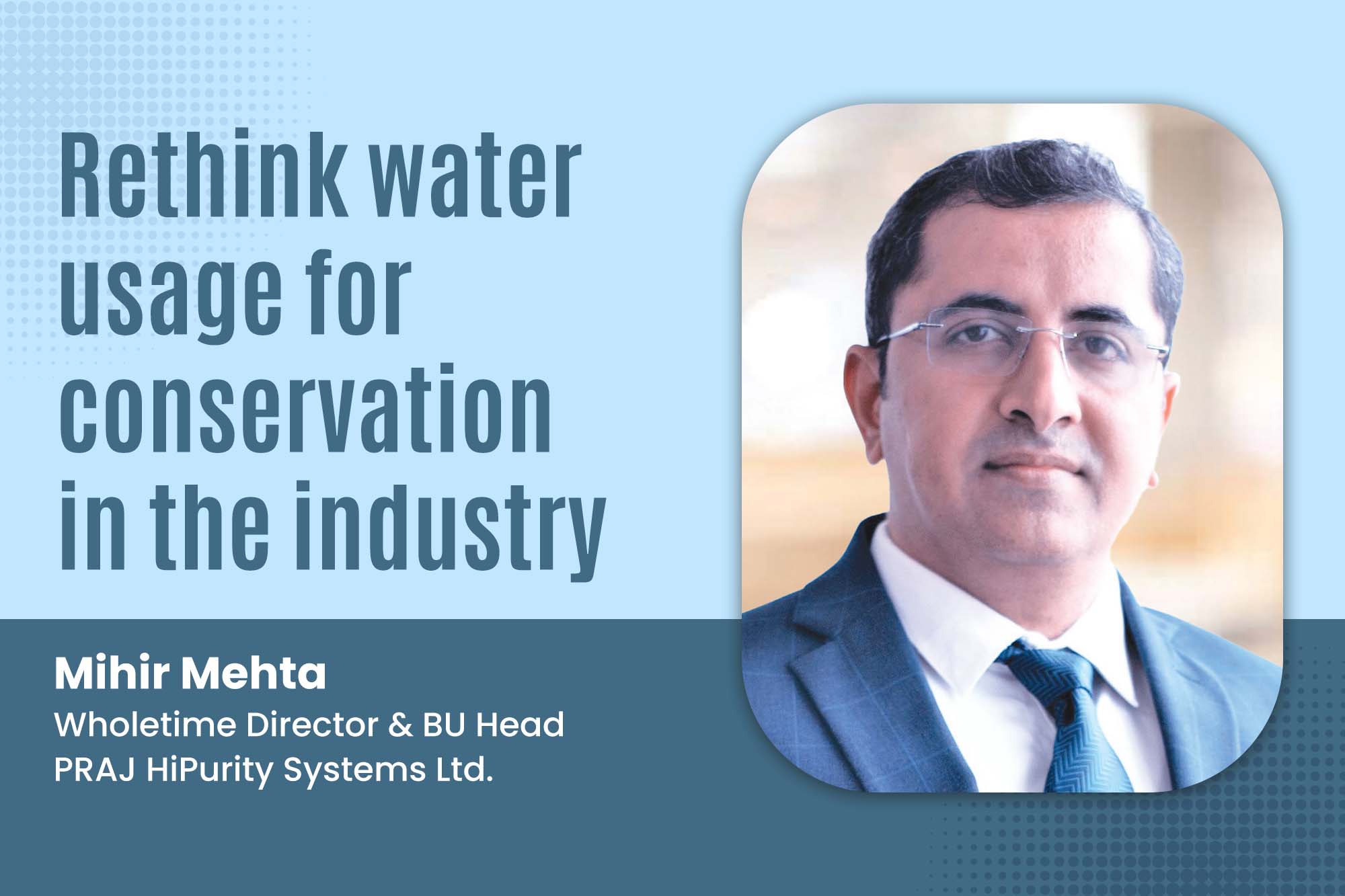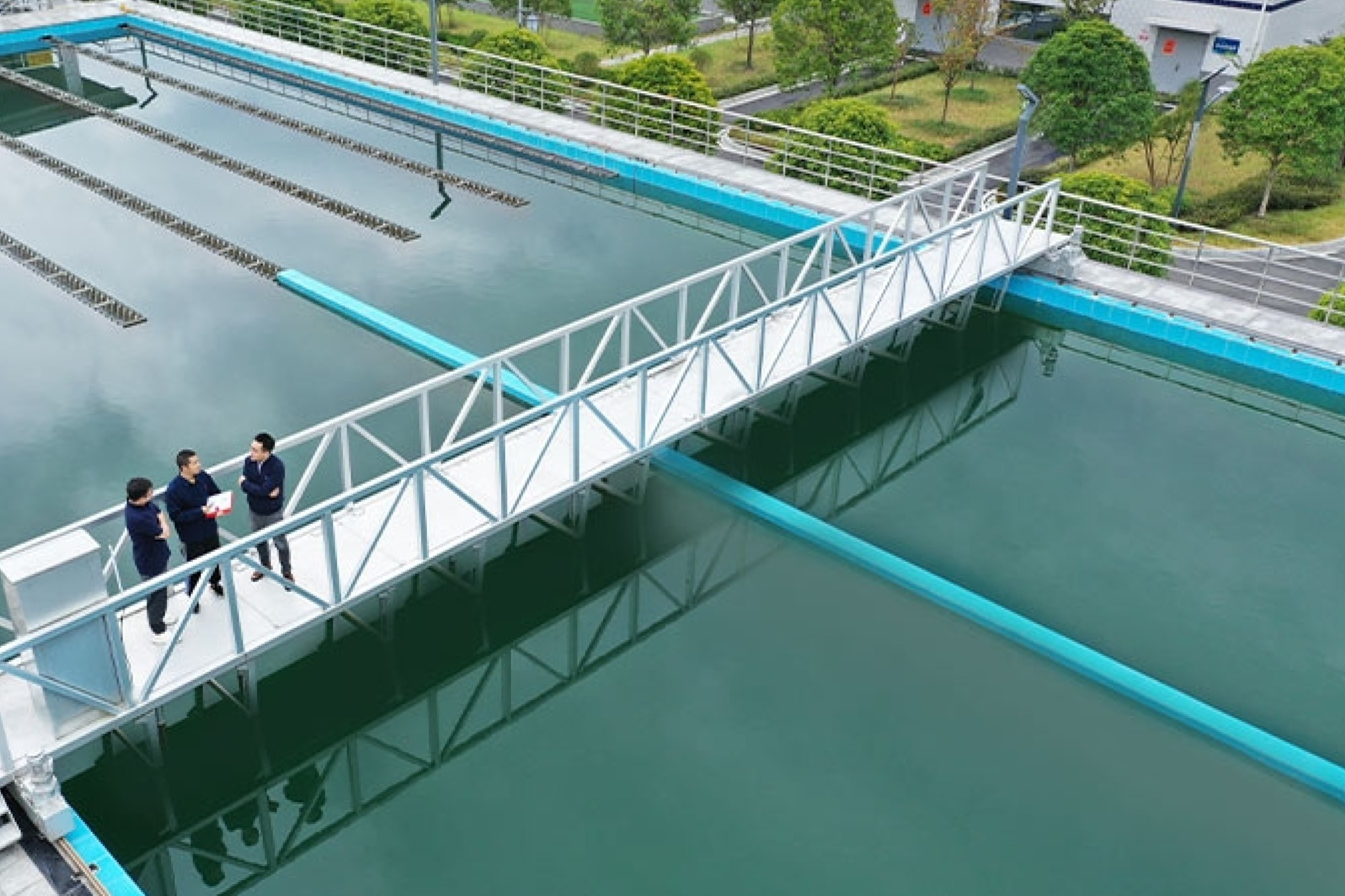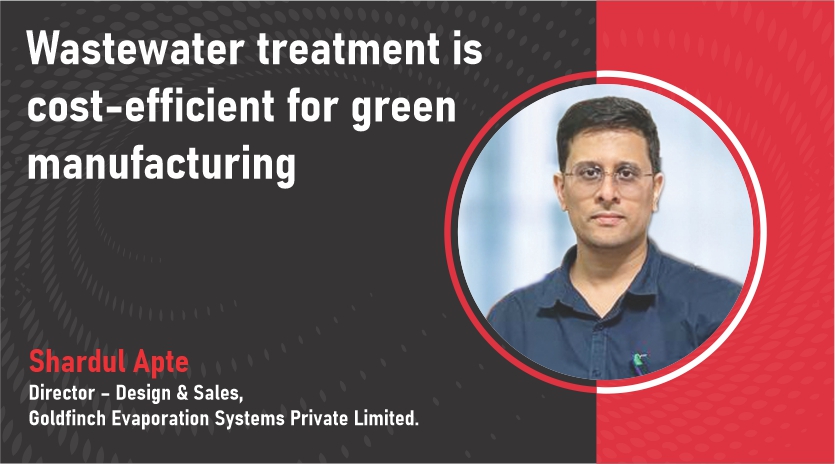Rethink water usage for conservation the industry
By Staff Report November 13, 2024 7:26 pm IST
Leonardo Da Vinci, known as the Universal Man for the breadth of his interests in arts, science, and technology, called himself “Omo Sanza Lettere” (A man without letters) because of his lack of formal education and difficulty with writing. I don’t promise to be a man of letters and, more importantly, not any better than Da Vinci. However, in this age of sustainability, as a key to a better future, we must ponder the threats to Mother Earth’s basic elements, i.e., W, water. Here is some food for thought.
Water is abundant, covering about 70% of the earth’s surface; however, the available fresh water is considerably less. 97.5% of the water on earth is salt water, leaving only 2.5% as freshwater. 70% of this freshwater is frozen in the icecaps of Antarctica and Greenland.
This leaves less than 1% of the water on earth easily accessible for use. This water is continuously replenished via the water cycle, but the ever-growing population with industrial growth is putting a strain on the freshwater supply. 3.6 bn people have access to smartphones; however, 2.2 bn people still don’t have access to fresh water. Growth in industries will be hampered by regions and governments facing these social problems, making the job of industry leaders difficult. The question is – How do we deal with this?
Breaking down the problem
Acknowledge the problem
Pharma, Lifesciences and many other industries often focus on the quality of the treated water more than the waste generated due to regulatory compliances and the commitment to make every drug safe and reliable. Many companies are planning to be net water-positive over the next few years. This is akin to the famous JFK Moon speech, which eventually ignited a series of efforts towards a larger cause. Declaring the plan is the first positive step towards acknowledging the problem and the commitment to find an answer.
Inadequate data
What is not measured cannot grow or be reduced. Recording and reviewing the data on water consumption is the starting point. With the advent of new-age instruments coupled with IOT platforms, it is possible to capture water distribution and consumption data at low costs. By capturing the water consumption data, many companies have successfully demonstrated a 10-15% reduction in net water consumption.
Technology access
Numerous technological solutions exist to reduce water wastage, but they are often expensive or too complex for ground usage. Technologies like solar vapour condensation, fog condensers, desalination, etc., have become accessible; however, using them at a smaller industrial scale is challenging. These are breakthrough technologies that make fresh water more available. To address the efficiency problem, advanced technologies like HERO (High-Efficiency RO) membranes and continuous electro-deionisation are offered by many leading companies. They provide greater efficiency compared to conventional low-cost membranes and technologies. The latter may save money, but they often compromise sustainability. Chemical-free technologies also help reduce the overall load on the ETP along with wastage.Reuse with a long-term view.
The need to reduce, recycle and reuse is becoming important for the process industry. Water reuse in sectors like pharma is met with caution from the regulatory agencies concerned with the quality and safety of drugs. This necessitates new strategies to reconcile the conflicting goals of wastewater reuse and the prevention of cross-contamination from reused water. Manufacturing plants must manage different wastewaters, distinguish highly toxic and concentrated streams and provide pre-treatment for effective effluent treatment from process plants. Innovative ZLD technologies can eliminate wastewater discharges, maximising water reuse in the industry. Despite the high potential for water saving, applying ZLD on an industrial scale is currently limited due to the high costs, energy consumption, and the generation of solid hazardous waste.
Reverse the sequence
Conventional buyers focus on the Point of Entry water system (design, budget, etc.) while designing a new plant. Decisions about the Point of Exit water system are made much later. This approach presents multiple challenges.
The water plant may not have been designed considering using the treated water from the ETP/ZLD for utilities or processes. This increases water wastage due to overdesign and the plant’s CAPEX. The size of the ETP/ ZLD also bloats with this 10-15% extra estimate, thereby increasing the cost. Most projects have depleted budgets when they reach the stage of ETP/ ZLD finalisations.
There have been cases where the plants have surplus recycled high-quality water without understanding its appropriate use and benefit. Given the various challenges, finalising the design and budget for the ETP/ZLD based on the feed water quality and waste volume is crucial. This approach should then guide the design of the Point of Entry water system.
Praj Hipurity is focused on creating high-efficiency systems and water conservation through reuse and recycling. Praj uses these measures in its manufacturing facility around Mumbai, where net water consumption has reduced by 19% and 26% over the last two years.
As Da Vinci once said, “It had long since come to my attention that people of accomplishment rarely sat back and let things happen to them”. Now is the time to decide and act across the industry spectrum.
Cookie Consent
We use cookies to personalize your experience. By continuing to visit this website you agree to our Terms & Conditions, Privacy Policy and Cookie Policy.











